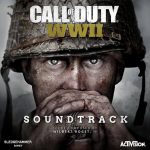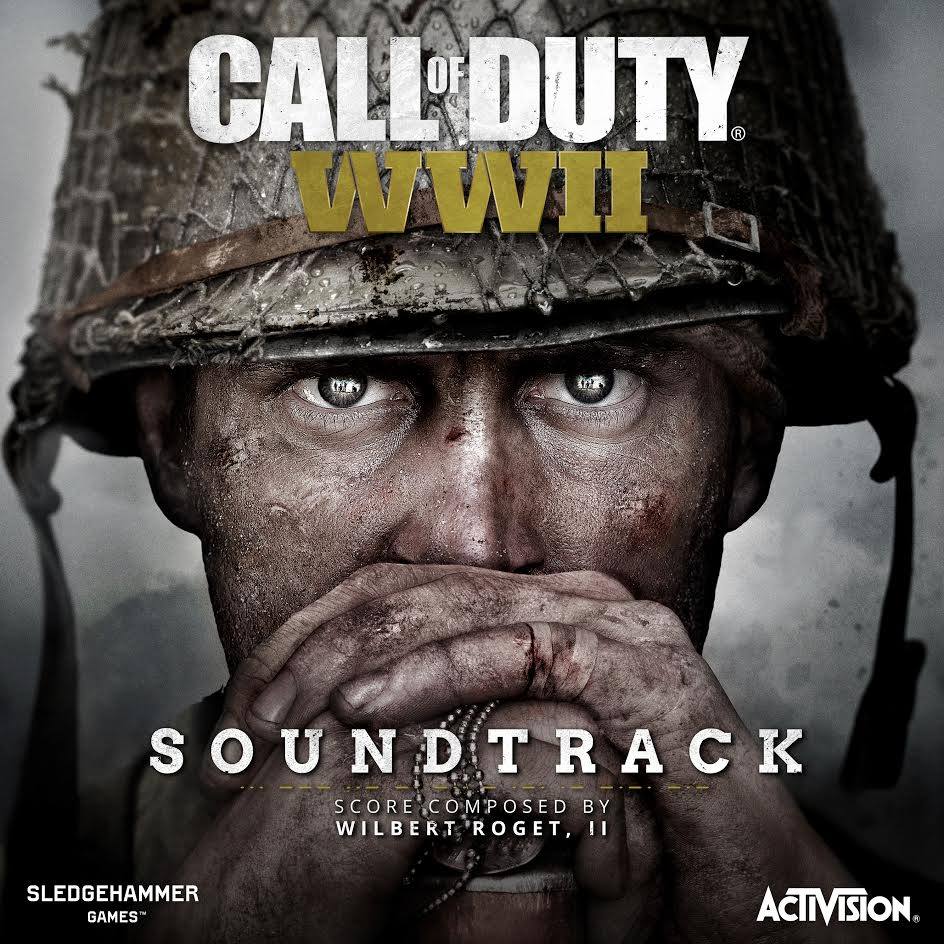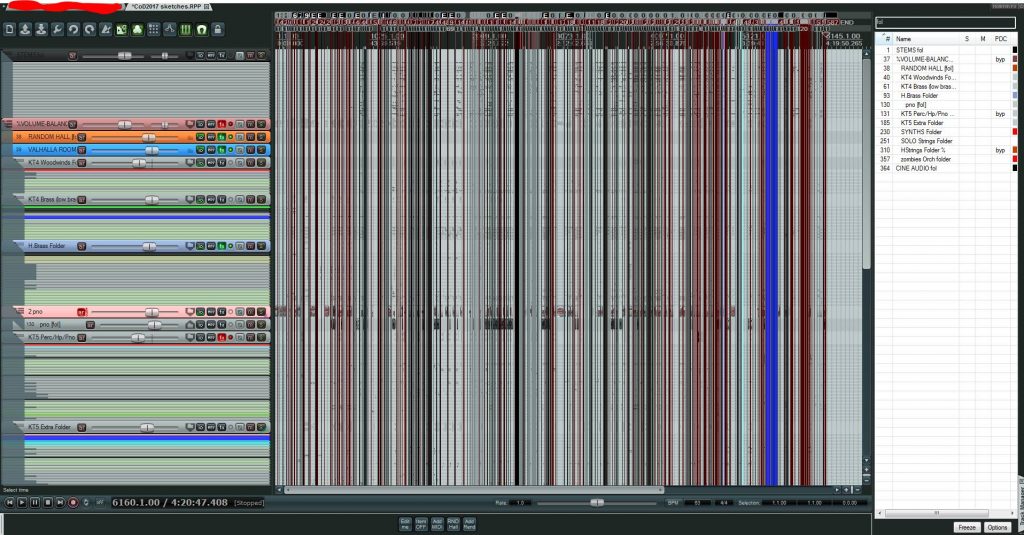 Last week in a Facebook group post Wilbert Roget II announced he had completed the score for the upcoming game Call Of Duty WWII, entirely in a single REAPER project. Seeing REAPER used on such a high profile game really feels like a victory for the community. Wilbert’s announcement turned to a Q&A which I have collected and reformatted to not be lost ephemerally. My own questions to Wilburt follow the community Q&A.
Last week in a Facebook group post Wilbert Roget II announced he had completed the score for the upcoming game Call Of Duty WWII, entirely in a single REAPER project. Seeing REAPER used on such a high profile game really feels like a victory for the community. Wilbert’s announcement turned to a Q&A which I have collected and reformatted to not be lost ephemerally. My own questions to Wilburt follow the community Q&A.
Wilbert Roget II
Very happy to announce that I’ve written the score to Call of Duty WWII, *entirely* in REAPER and all in one single 4+ hour long, 364 track deep, 115mb project file!
Delivery was in stems as well, with most cues approaching 30 stems each. Monster of a project, but REAPER handled it even on my somewhat modest 2012 PC (Win7 64bit, 24gb RAM, three SSD drives and two HDDs, RME Babyface).
Wilbert also included a screenshot of the over 4-hour session
– Stems folder located at the top level in-line with their respective tracks
– Custom buttons for 1) muting+offlineing audio clips (used for stems), 2) adding MIDI tracks, 3) turning off hall reverb, 4) adding my “renderer” track template which allows me to easily capture audio from KONTAKT
– Sectional folders (“KT4 Woodwinds”, “H.Brass”, etc.) follow a naming convention so I can just type “fol” in the Track Manager and see a list of them for easy soloing/muting. I also bypass certain folders’ FX to save CPU while writing
– Regions for individual cues, often colour-coded (black = old versions or rejected cues, blue = cinematics)
This isn’t Wilbert’s first game score of course, his music can also be heard in Guild Wars 2 PoF, Anew: The Distant Light, Lara Croft: Temple of Osiris, Star Wars: The Old Republic, to name just a few. You can find him at his website www.rogetmusic.com and on twitter @WillbertRoget
Community Q&A
David T – Did you use a template?
Wilbert Roget II – Good question – Everything I do is template based, or (frequently) based on a clean Save As from a previous project. I think for this project I actually started off with my Super Roman Conquest score (Listen on SoundCloud) and then removed stuff I didn’t need, added solo strings, etc. Then as time went on I added new features like the Stems folder.
Brian M – By mute and offline audio clips, is it the same as a standard freeze or render? Also wanted to know more about the renderer track template, I’m a huge KONTAKT fan, would be cool to know more!
Wilbert Roget II – The mute+offline button (labelled “Item OFF”) is just an action that mutes a clip and then sets it offline. I do that on all my stem renders to save a bit of RAM/CPU, and also of course to make sure that it’s not playing two copies of the same audio at once.
Renderer track template just sets the input to “Record Output (stereo)” so that I can just drag a track/folder/whatever into it, hit record, and it’ll print audio for me. With synths or audio clips you can do it automatically (right-click –> “Apply track/take FX to items as new take“), this is more for like a single KONTAKT instrument clip that I wanna work with in audio instead of MIDI. I put this template here if you want it, simple but a huge time-saver
Download the “Renderer” Track Template (Dropbox)
Louis P – Two questions:
1. On this soundtrack, about what percentage of the final results were virtual instruments versus live recordings of instrumentalists or vocalists?
2. I hope this isn’t too much to ask, but could you give a list by category of all the plugins you used for the project? If this is too much, could you just list all the virtual instruments?
Wilbert Roget II – Great questions! So we recorded the entire thing at Nashville Music Scoring with unbelievably fantastic players.
Every cue in the game, with the exception of one zombies cutscene-thing and a tiny revision to another cutscene, has orchestral elements scored live. That said, several elements stayed in samples – mostly percussion, and some sound-designy elements like the blurred horns effect at the start of the main theme. I don’t credit myself (cuz I suck!!!!!!) but I played guitar/bass as well.
ValhallaDSP Shimmer is one of my absolute favorite special effects. And ValhallaRoom is wonderful for giving tiny bits of ambience to hand drums, bass guitar, or solo strings; it’s also great for doing the whole “extremely verby world instruments” thing too
Mixes were by folks at Sony Interactive Entertainment’s Bridgepointe studio. Mix engineers were Justin Lieberman, Tyler Crowder, and Scott Bergstrom; Mastering by Marc Senesac. Amazing group.
John M – Interested to know what sample libraries you are using.
Wilbert Roget II – Hollywood Strings and Brass; CinePerc; Sample Modelling Brass; Spitfire Albion; VSL Opus 1 & 2; and a billion other smaller libraries!
Gaan K – How satisfactory was your MIDI mockups? Can you share maybe one of the pieces’ MIDI mockup version?
Wilbert Roget II – They had to be shippable quality, and in fact sometimes I’d even get revision notes just for the mockup mix. This is because the mockup was used as a guideline for the final mix, and the non-orchestral stuff (perc, synths, sound design) were used in the final as well.
Things to note: I still take into account performance idiosyncrasies (eg. horns “leaning into” the notes), notes aren’t perfectly quantized, but at the same time the MIDI is still readable enough for the Orchestrator to work from without too much cleanup.
REAPER Blog Interview
After the great Q&A on the Facebook Group I still had a few questions for Wilbert.
Jon T – Why work in a single session? That seems so risky but I’m not too surprised that REAPER could handle it so well.
Wilbert Roget II – There were actually quite a few advantages to this. For starters, because I do so much editing and tweaking in KONTAKT, I don’t use VEPro or multiple machines or anything like that. Everything is all on one single PC, but unfortunately that means that any time I open a different project file, I have to wait over twenty minutes for the samples to load! Having everything on one project file negated that extreme time-waste, and I generally would keep the file open and running on my PC 24/7. There was never any wait time when I wanted to get back to work, or switch to another cue for revisions and such.
Similarly, it was much easier to start new pieces this way, with everything already loaded, mixed and ready to go. I got much more consistency across the score than I would’ve if I had separate project files, and I was also able to re-use solo recordings and sound design elements in new tracks very easily.
Jon T – Are there any tips & tricks you can share with REAPER users to manage navigating large sessions such as this?
Wilbert Roget II – While my single-project technique has its advantages, REAPER does run into some slowdown as the project files grow. The file began as a blank template at maybe 12mb or less, but eventually grew to over 104mb over time, with countless gigabytes worth of audio clips, MIDI data and KONTAKT/Play patches referenced within. MIDI latency wasn’t affected at all, but when zoomed out fully, transport seek times increased dramatically. And of course, it becomes very difficult to navigate overall.
My biggest piece of advice is to use Regions wisely. Come up with naming conventions for each type of piece, so that you can easily search and find what you want. You can color your regions too, for example my cinematics were Blue and my old/rejected cues were Black. It might also make sense to use Markers to delineate groups of regions – for instance, I had a marker to signify where the Multiplayer music cues would start.
Jon T – When composing did you have any gameplay or animations or concept art to reference?
Wilbert Roget II – Because of the tight schedule and constantly-evolving level design, it would’ve been impractical for me to score the game linearly level-by-level. Instead, we worked with the music team at Sony Interactive Entertainment to supervise, edit, mix, and implement the score. They would give me more broad, general descriptions of each piece they wanted, based on their own level spotting. Then from there I’d write based on their notes, storyline documents, and some limited screenshots and gameplay capture videos.
Jon T – What was the process like for turning the in-game music loops into ‘songs’ for the CD/digital album release?
Wilbert Roget II – Normally I would have to do things like combining stingers with loops and ending-tags to get a satisfying contour on each track. But because we worked with the aforementioned Sony team for editing, I actually wrote the pieces themselves in this way – all of these stingers and endings were naturally written into cues. So there was very little editing for the soundtrack release.
—
Huge thanks to Will for sharing his knowledge with us. Call of Duty: WWII Official Soundtrack is available now.



Comments
2 responses to “Composing the Call Of Duty WWII Score – Interview with Wilbert Roget II”
This is profound. Im audio engineer Andi trained with pro tools 10-12 but had issues with Protools due to financial issues. Well I must say I’ve been using reaper and it’s a perfect Daw and it runs in principles of Protools. Do u guys have certification for reaper users and so on.
I have used Reaper since I gave up using Propellerhead Reason 7.1 I personally think Reaper is the greatest daw in the world. It achieves everything I could possibly ask of it. And dose not strain my 64 bit PC at all. I love it, HAPPY ME!